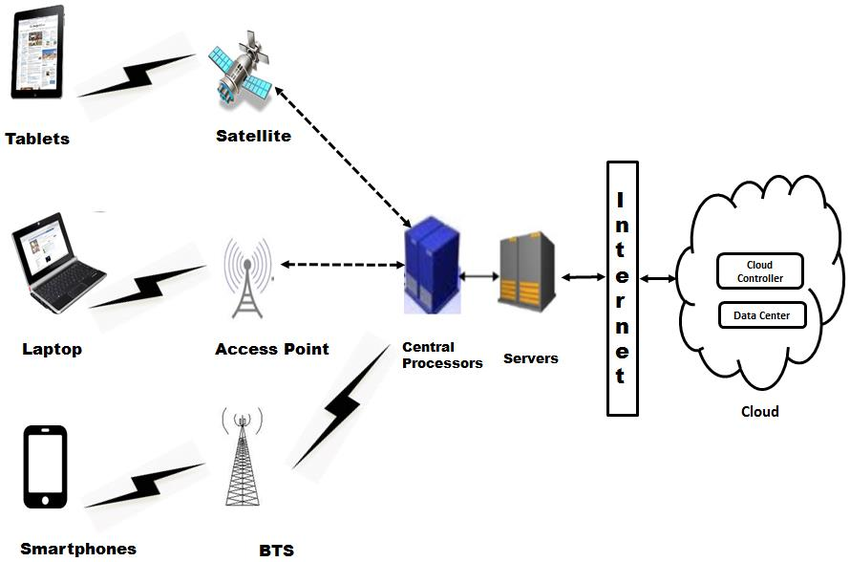Cloud Computing offers such smartphones that have rich Internet media support, require less processing and consume less power. In terms of Mobile Cloud Computing (MCC), processing is done in cloud, data is stored in cloud, and the mobile devices serve as media for display.
Today smartphones are employed with rich cloud services by integrating applications that consume web services. These web services are deployed in cloud. There are several Smartphone operating systems available such as Google’s Android, Apple’s iOS, RIM BlackBerry, Symbian, and Windows Mobile Phone. Each of these platforms support third-party applications that are deployed in cloud.
Architecture
MCC includes four types of cloud resources:
- Distant mobile cloud
- Distant immobile cloud
- Proximate mobile computing entities
- Proximate immobile computing entities
- Hybrid

How mobile computing works?
In general, contemporary mobile computing involves a mobile computing workstation of some form, commonly referred to as a mobile device, and a wireless network connection based on Wi-Fi (wireless LAN) or cellular (wireless WAN) technology. Local data storage on the mobile device is typically provisioned, as well, with access to local data in some cases substituting for the network connection.
Nomadic computing may utilize a wired network connection and AC electrical power, neither of which is appropriate for fully mobile operations. Access to network resources is essential to contemporary mobile computing, given the shared and collaborative nature of computing overall today and the prevalence of cloud-based resources, and it is rare to find a mobile device without integral battery power.
Mobile devices include notebook PCs, which are functionally equivalent to desktop PCs; tablets; mobile phones, or smartphones; and a variety of products aimed at vertical and specialized applications, such as those used in medical applications, surveillance and security, and telemetry and control. In general, users select the device that is most appropriate to the applications they require, with notebooks better suited to content creation and tablets often preferred for content consumption. Smartphones represent a compromise in terms of screen size and other user interface elements, such as small, screen-based keyboards, but also function as pocket-size computers and communicators.
Mobile technologies
Most vendors of microprocessor integrated circuits offer mobile versions of their products, featuring lower power consumption, smaller physical size and, consequentially, often lower performance than their desktop counterparts. Such is not an issue for most mobile applications, and the broad range — including physical size and price — of mobile devices available today can address most application demands.
Wireless communications are well-established, and today’s Wi-Fi and 4G networks can offer throughput adequate for essentially every application. With the recent reintroduction of unlimited cellular data service plans, most users find their monthly data expense bounded and manageable, with good availability, reliability and throughput.
Color graphics displays are universal on mobile computing devices today, with smartphones, tablets and some notebooks featuring touch as their primary human-computer interaction model. As displays are a major consumer of battery power, much product engineering today is devoted to improving the performance of this vital element, including more efficient backlighting for LCD screens and OLED displays.
Mobile data storage is rapidly advancing to all-solid-state designs based on flash memory technology. Costs of flash continue to decline, along with improvements in access speeds and physical storage density. Today, cloud-based storage is used primarily for backup, bulk storage and file sharing, but may take on a role as primary storage as wireless services become more pervasive, reliable, fast and cost-effective. Some local storage will likely always be desirable, but cloud-based storage will likely result in lower device cost, longer battery life and lower device weight.





